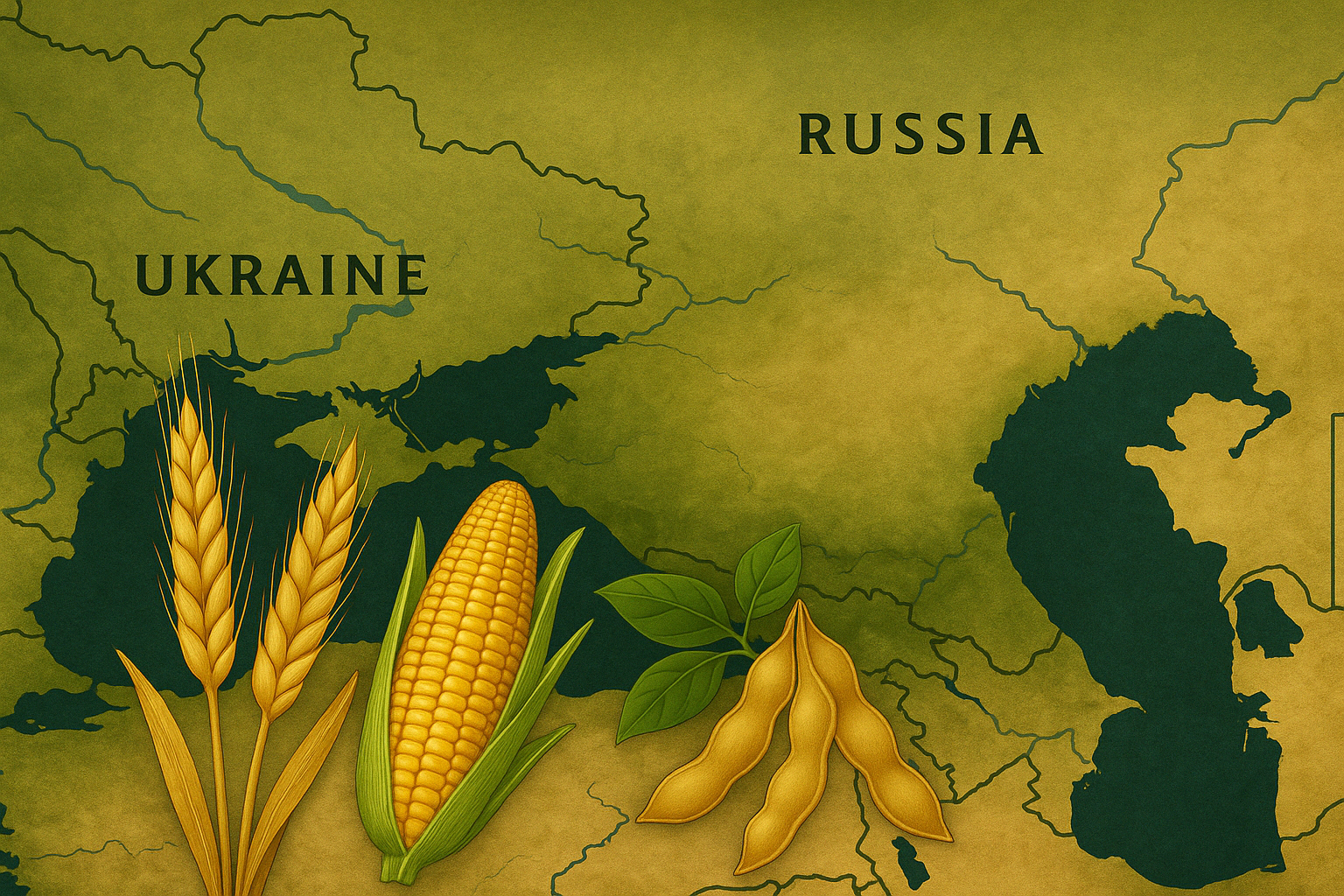Bulgaria: sharp corn retrenchment, sunflower resilience with weaker margins
Bulgaria’s corn exports have fallen almost fourfold across three marketing years, sliding from 1.26 MMT in 2022/23 to just 346 k t by Oct–Apr 2024/25, with export earnings shrinking even faster as global prices eroded. Key outlets—Romania, Greece, and previously China—couldn’t offset the loss of the latter amid Black Sea war frictions, forcing a repricing of farmgate expectations and cash flow for producers. Sunflower seed flows proved more resilient in tonnage, rebounding to ~605 k t in Sep–Apr 2024/25, yet revenue lagged due to softer international values—evidence that volume recovery doesn’t automatically restore margins. For processors and traders, this underscores a pivot from throughput to value capture (quality premiums, timing, cost-of-carry) as the profit fulcrum.
Ukraine: stable wheat size, tighter milling share, and constrained EU corridor
Ukraine’s 2025 wheat harvest is near last season’s level at ~21.9 MMT, thanks to slightly larger area offsetting weather-related quality losses. Only ~45% classifies as milling versus ~50% a year earlier, raising domestic-milling competition and the likelihood of sharper segregation between food- and feed-grade streams. Access to EU demand remains rationed: a 758 k t duty-free wheat quota for Jun–Dec 2025 had already been 44% utilized by end-August, leaving ~421 k t headroom into winter—meaning exporters will lean harder on non-EU routes precisely as the global market turns more crowded.
Russia: heavier wheat keeps FOBs competitive
Russia’s export machine is re-accelerating as harvest momentum returns and yields surprise in key eastern regions. Shipments rebuilt from 1.7 MMT in July toward ~3 MMT in August, including sizeable sales to Egypt—re-establishing Russia’s role as price setter for 12.5% protein FOB values. With a larger aggregate crop expected, the region’s clearing price will continue to reference Russian offers, pressuring rival origins and compressing EU/U.S. basis unless currency or freight flips the relative value.
Demand landscape: Egypt’s recalibration and the EU’s smaller import pull
Egypt trimmed wheat imports by ~30% in Jan–Jun 2025, but annual needs are still projected at a record 13 MMT, implying a steeper ramp later in the year and flexible tendering across French, Romanian, Ukrainian, and Russian slots. The EU, by contrast, is dialing imports down (USDA pegs a 39% y/y reduction), and with Ukraine’s quota-cap, Eastern European gateways won’t relieve regional burdens as easily as last season. These shifts channel more Black Sea wheat toward North Africa/Middle East—where price competition is fiercest—and Asia—where freight spreads and protein specs become decisive.
Pricing mechanics: quality bifurcation and carry
Two forces dominate near-term pricing. First, quality: Ukraine’s lower milling share tightens premiums for 11.5–12.5% protein parcels even if aggregate wheat tonnage is steady; feed wheat will need to clear at deeper discounts into destinations tolerant of higher substitution. Second, the forward curve: soft flat prices and high financing costs have thinned commercial carry. Elevators and exporters that can optimize elevation windows and freight timing will outperform; otherwise, cash premiums must do more work to pry grain loose.
Logistics and policy: lanes open, rules matter
The corridor mix remains fragile. While Danube and overland EU paths are operational, quota thresholds, certifications, and episodic bottlenecks inject timing risk, particularly for oilseeds where Ukraine’s new export duties complicate flows. Traders are front-loading documentation hygiene and broadening destination mix to reduce “choke-point” exposure. Bulgaria’s experience—volume without value—highlights why freight optionality and hedging discipline are now core P&L drivers.
Oilseeds: divergent signals
Oilseed flows reflect competing pulls. Bulgaria’s sunflower shipments recovered in tonnage but not price; Ukraine’s duty-induced pauses in rapeseed/soy exports create short-term tightness for crushers, before re-routing stabilizes. With Canada’s canola cushion lower and palm oscillating on stocks and biodiesel mandates, Black Sea sunseed and rapeseed will see brisk two-way trade—yet netbacks will be set by crush margins abroad, not just FOB offers.
What to watch next
-
Russia’s export pace into Q4 and any currency-driven offer shifts;
-
Ukraine’s milling/feed split and EU quota burn-rate;
-
Bulgaria’s corn marketing—does low price spur demand or force on-farm storage;
-
Egypt’s tender cadence and quality specs;
-
Policy changes on duties/quotas that could unblock or redirect oilseed streams. Together, these will define whether today’s heavy-supply narrative translates into sustained price pressure—or whether localized quality and logistics premiums carve out pockets of strength.

